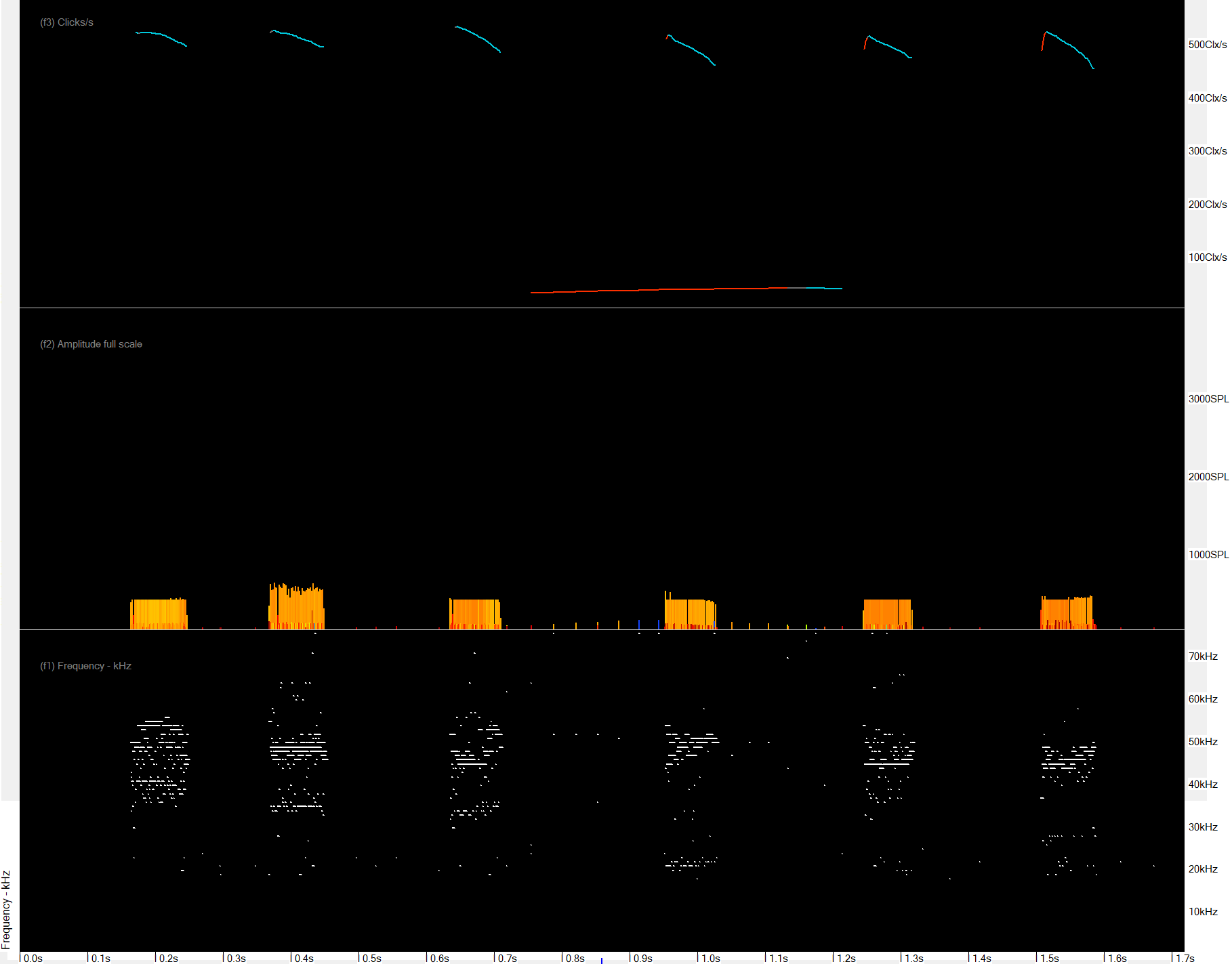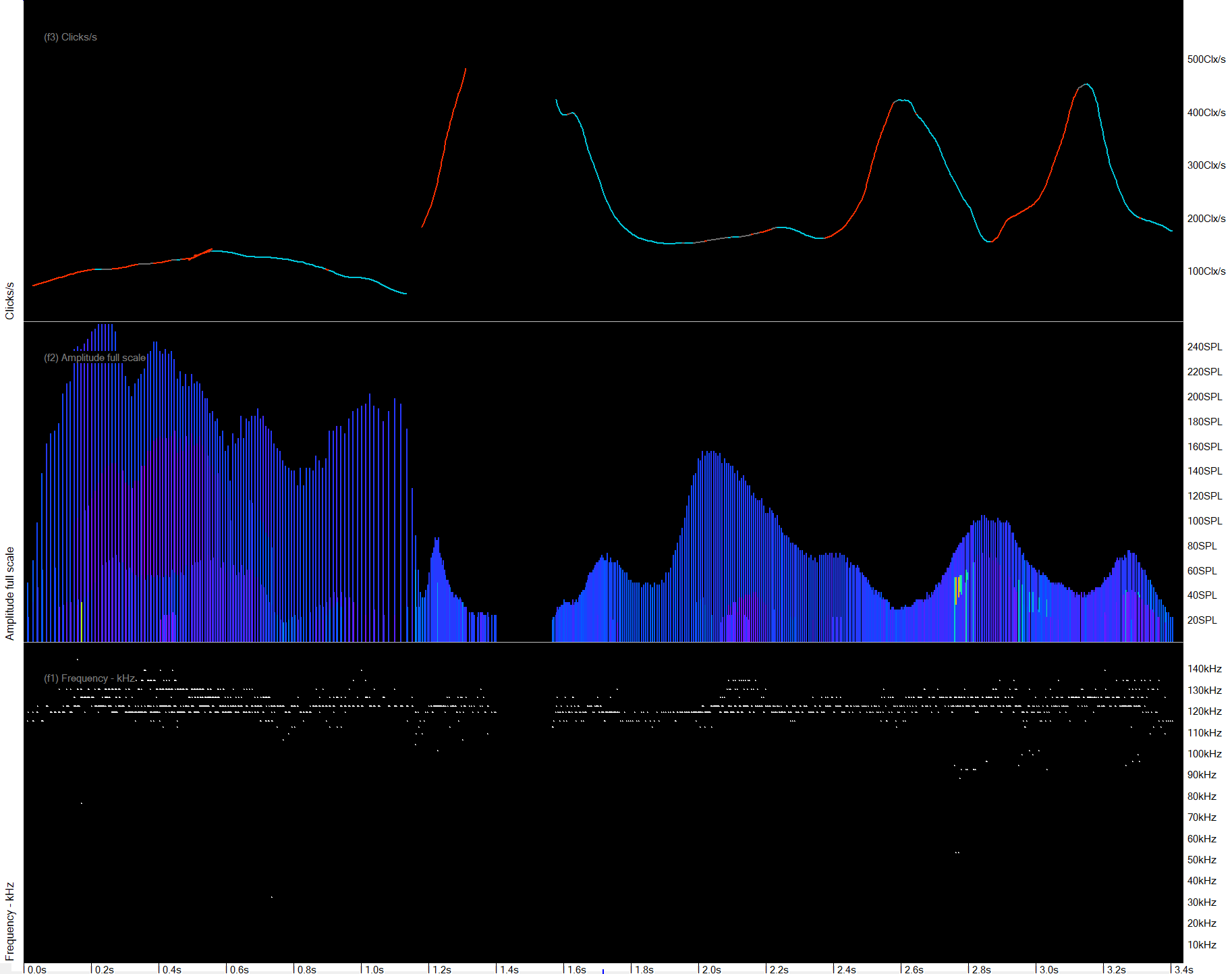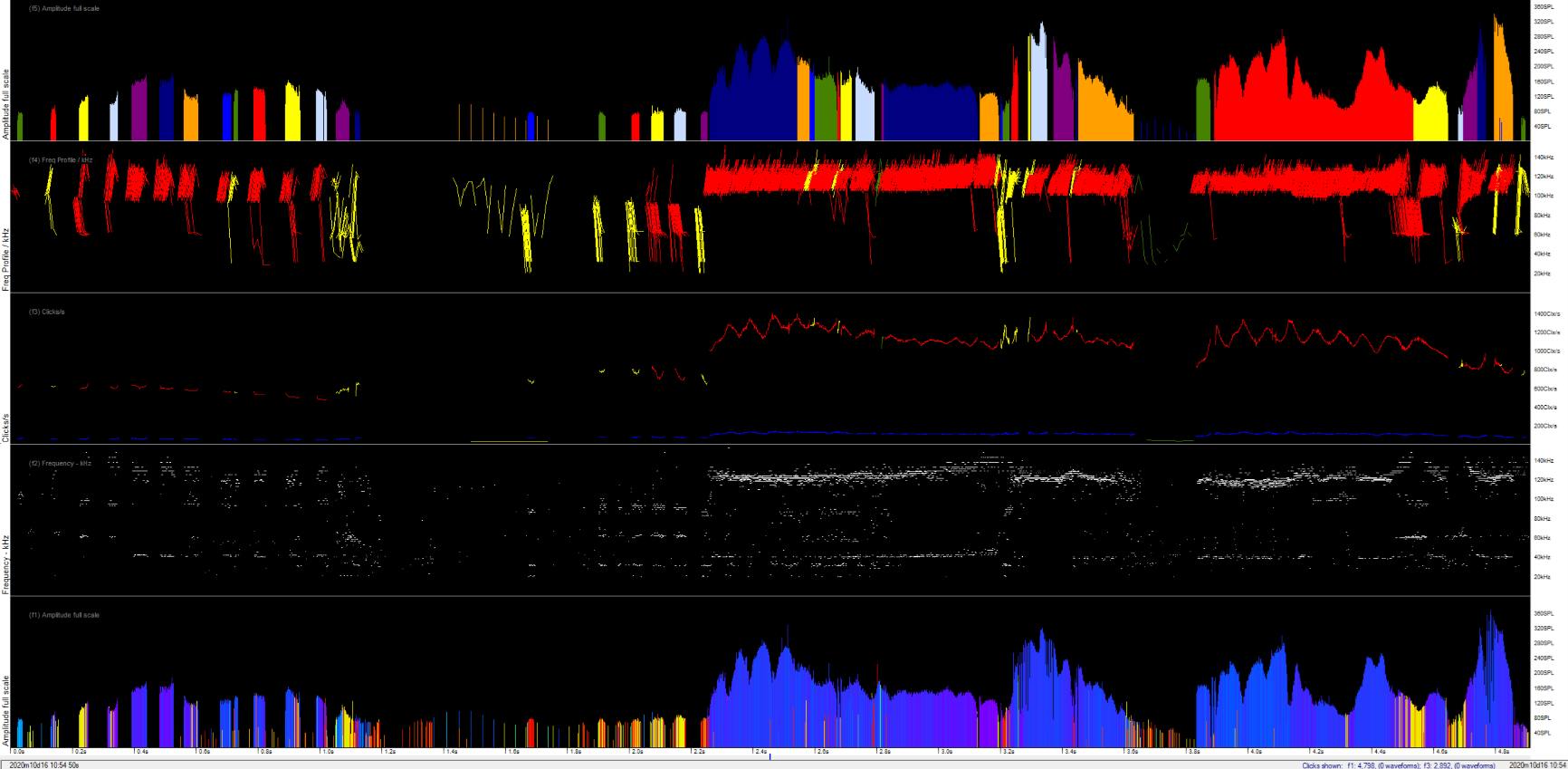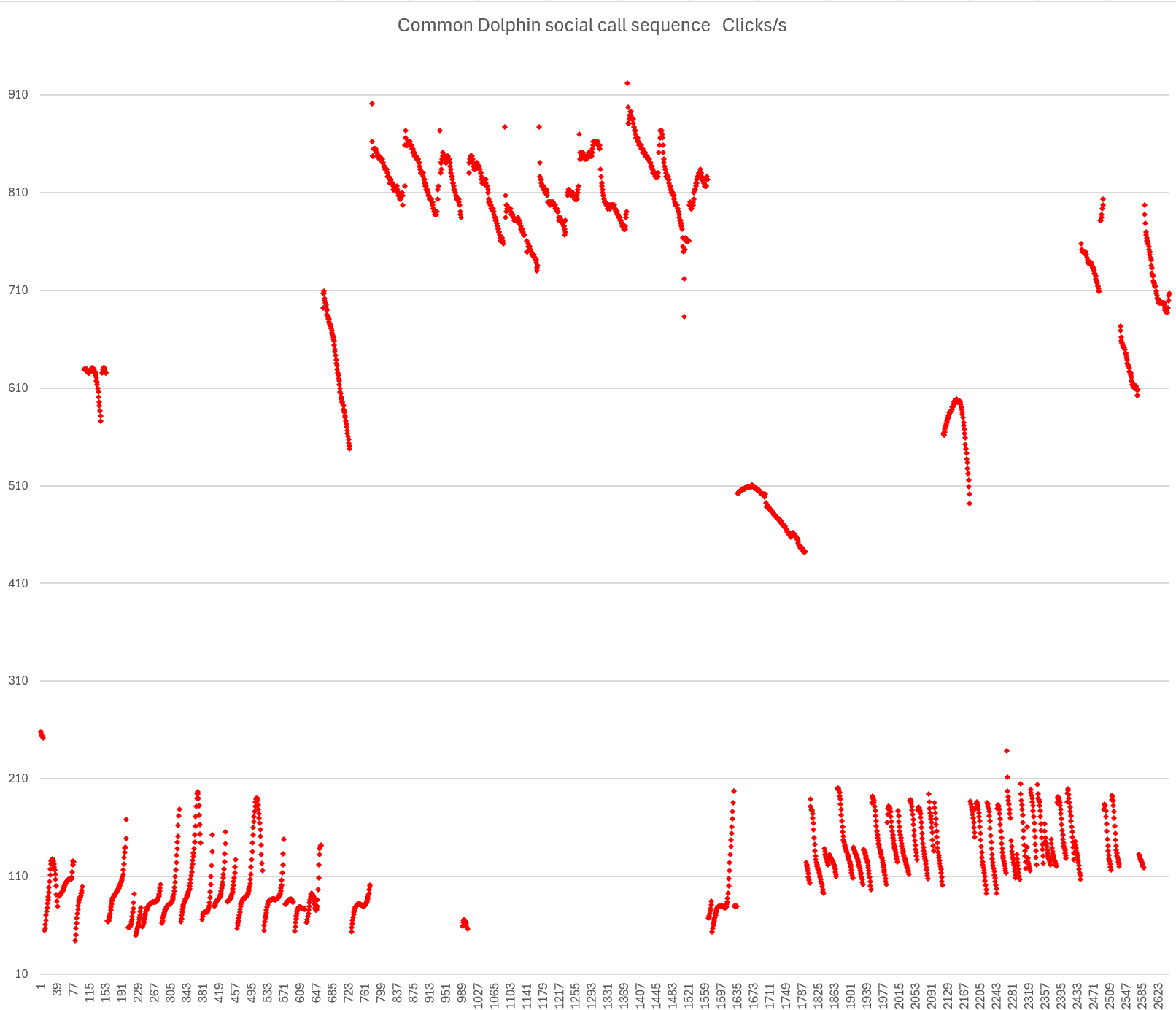A video on finding social calls in POD data is here

Dolphin social calls
It has long been known that fast click bursts (sometimes called ‘burst pulses’) are social communications, but they have been difficult to study.
The socially significant feature is the click rate profile, not the frequency spectrum, but conventional methods of analysing such data have focussed on the frequency spectrum leaving automated train identification lagging far behind.
Now the F-POD + KERNO-F classifier combination has unexpectedly opened up this field of study by delivering large volumes of generally good click rate profiles in which many social calls can be seen.
The starting point for recognising social calls is repeated patterns like these, from dolphins in Bulgaria.

Porpoise social calls
These data also came from the BlackCeTrends project and are porpiose calls from the same site in Bulgaria – data from Dimitar Popov.
Here the click rates are high and remain high for a much longer period than the brief rises seen as a foraging train turns into a feeding buzz in the final stages of prey capture.
And there is an element of repetition that is typical of some types of social call.
There are many high click rate trains that appear different from normal foraging and making the distinction between foraging and social calls is a new challenge!

Boto social calls
F-POD data collected as part of World Wildlife Fund studies, in Brazil, of by-catch mitigation, have revealed remarkably complex and diverse patterns of social communication.
Here repeated short fast bursts are followed by long calls with elaborate patterns of click rate modulation.
Why would a river dolphin show the most complex repertoire of social communication?
One theory – perhaps the best – is that there is a major advantage of using a highly directional form of social communication, clicks, instead of omnidirectional whistles. That advantage could be less predation by caiman.
Another theory is that directional communincation has its own advantage in communication terms … and cetaceans appear to be the only animals with directional communication.

Complex call sequences
This shows a sequence of calls, almost certainly from Common Dolphins. The overall sequence was spread over 3.5 minutes but here the click rate profiles are telescoped together.
The sequence consists of 3 or 4 distinct call types:
- calls starting around 50/s with or without a ‘shoulder’ at 80/s
- very fast trains around 830/s nearly all descending in rate
- calls starting around 180/s and descending to around 100/s These ocurred after a gap of two minutes
- several other fast click trains that do not appear to be part of a foraging pattern
There is a strong case for viewing the comonent calls in this larger pattern as words – they are distinct, conserved and used in an organised way, but the sequence is not a stereo-typed sequence.